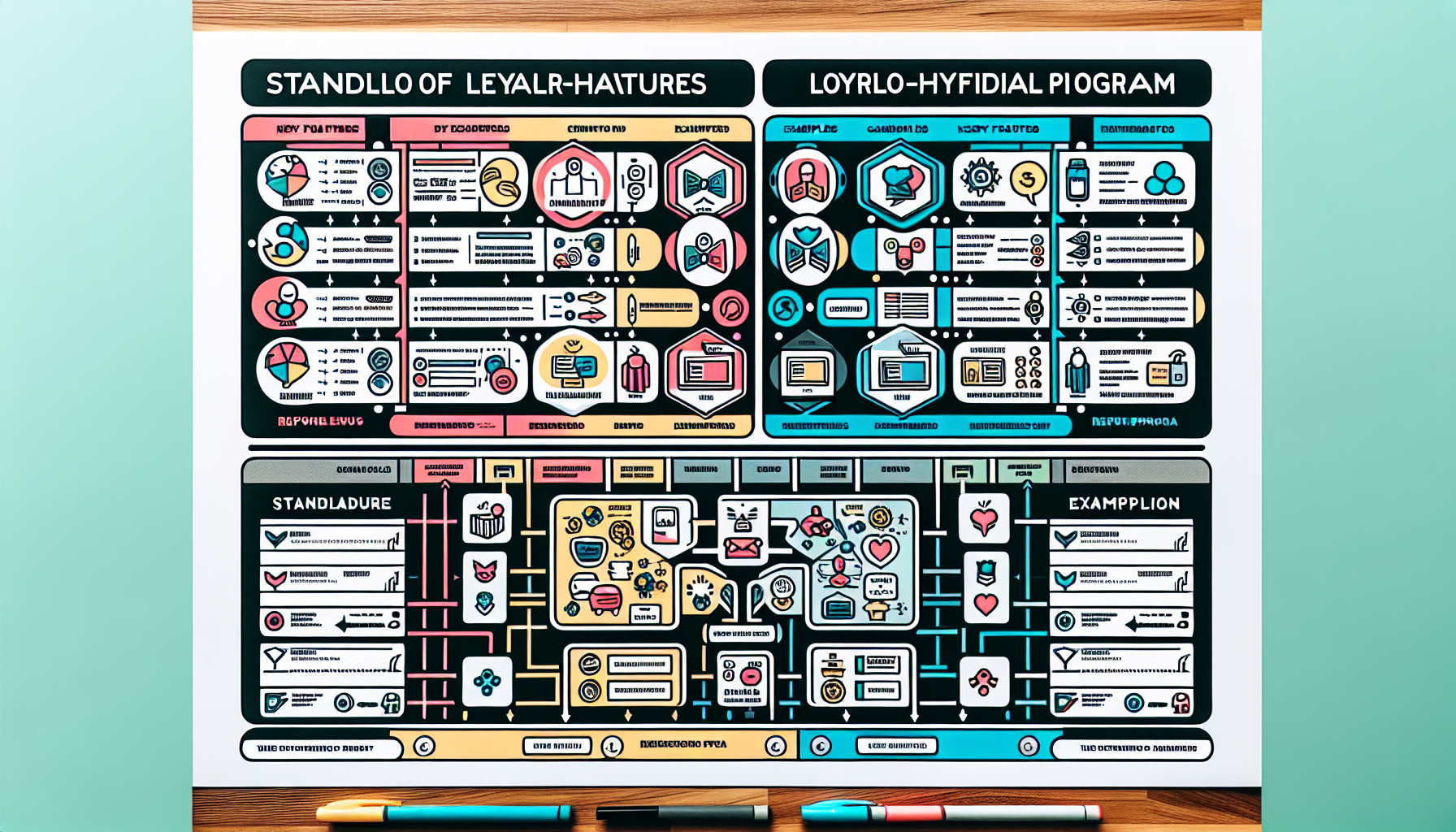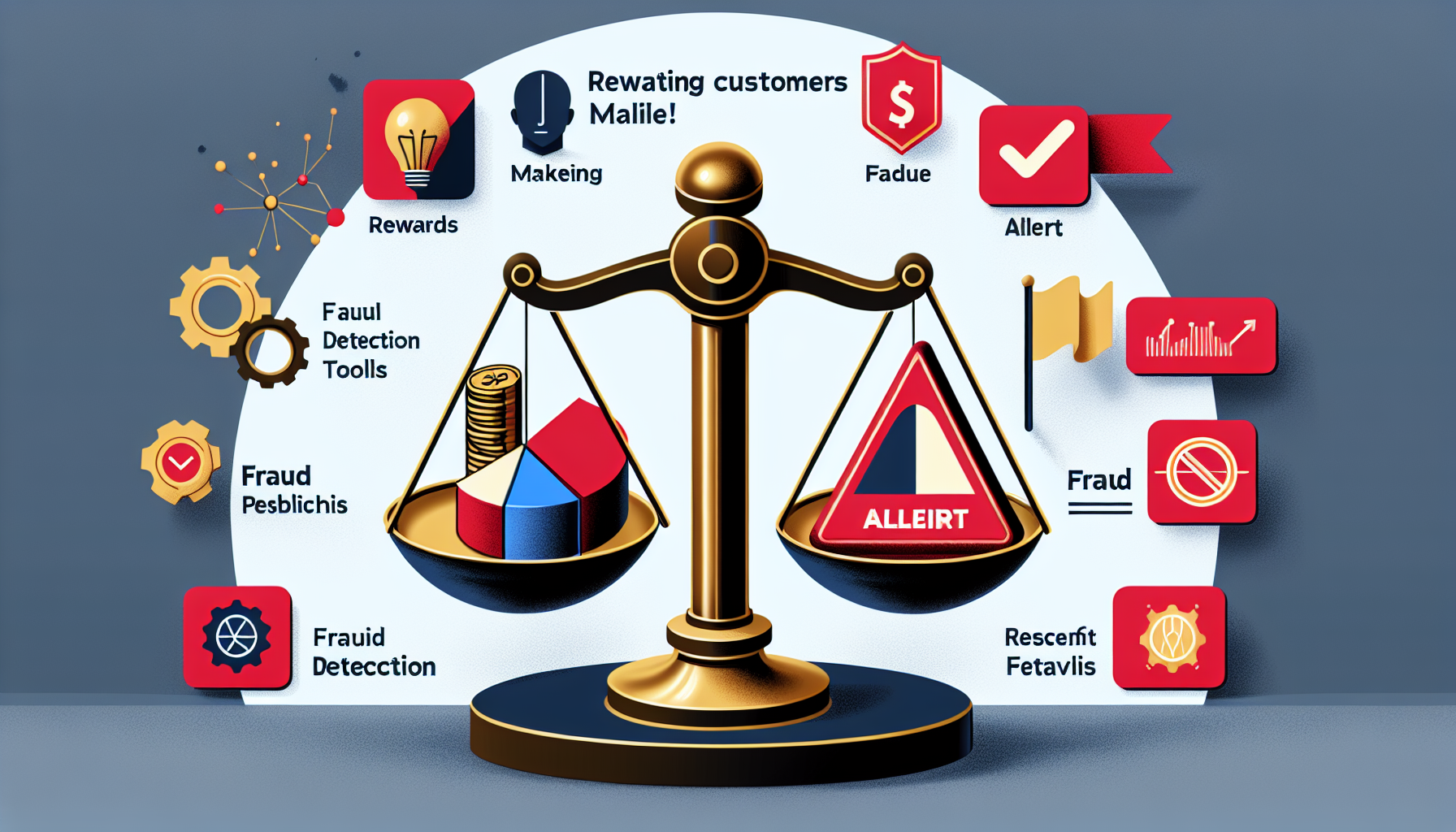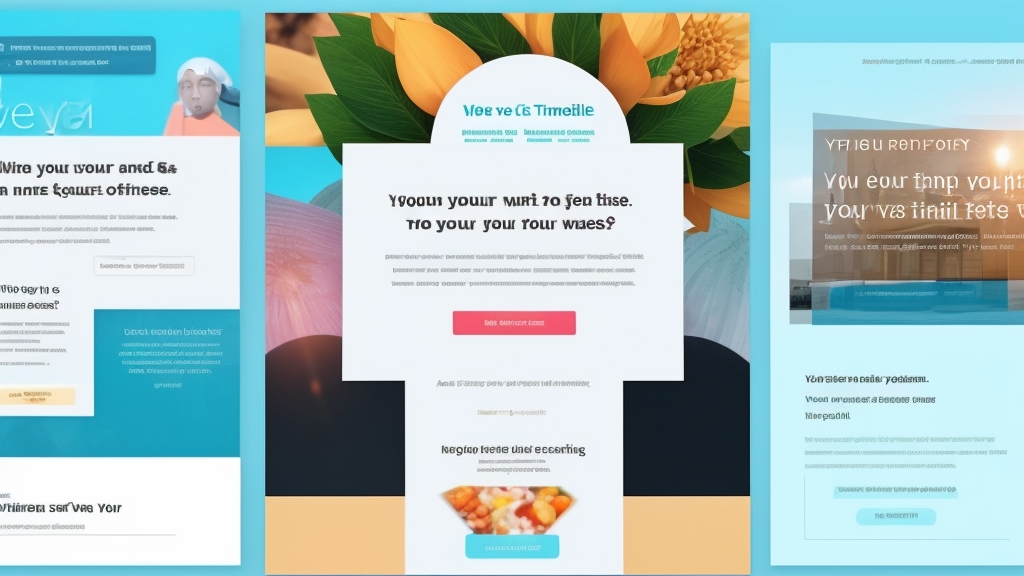The Ultimate Guide to Advantages and Disadvantages of Referral Programs
Referral programs are a powerful marketing strategy where businesses incentivize their existing customers to refer new clients. These programs typically offer rewards—such as discounts, free products, or points—to both the referrer and the referred customer. This creates a win-win situation that encourages word-of-mouth marketing.

Understanding both the advantages and disadvantages of referral programs is crucial for businesses considering their implementation. While these programs can significantly boost customer acquisition and foster brand loyalty, they also come with challenges like potential fraud and balancing profit margins.
It's important to have a solid foundation in terms of privacy policies, terms of service, and proper handling of user data during the referral process, such as through an intake form or after an intake submission.
This article will provide an in-depth exploration of the benefits and challenges associated with referral programs. We will also share practical tips for successful implementation, helping you make informed decisions to maximize your business growth.
The Power of Referral Programs in Business Growth
Modern marketing strategies often struggle with the rising customer acquisition costs. Over the past eight years, these costs have increased by an astonishing 222%, making it crucial for businesses to find more cost-effective ways to attract new customers. A referral program stands out as a powerful solution to this problem.
How Referral Programs Work
Referral programs use the trust and satisfaction of existing customers to bring in new ones, significantly reducing acquisition expenses. Unlike traditional marketing channels that require substantial investment in advertising and promotions, referral programs rely on word-of-mouth, which is both powerful and economical. When a happy customer refers a friend or family member, the recommendation carries more weight than any advertisement could, leading to higher conversion rates.
Benefits of Referral Programs

- Lower Customer Acquisition Costs: By leveraging existing customers to acquire new ones, businesses can significantly reduce their spending on advertising and promotions.
- Higher Conversion Rates: Referrals tend to have higher conversion rates compared to other marketing channels because people are more likely to trust recommendations from friends or family.
- Increased Customer Lifetime Value: Referred customers often have a higher lifetime value as they tend to make repeat purchases and spend more over time.
Fostering Long-Term Brand Loyalty

Beyond just acquiring new customers at a lower cost, referral programs play a crucial role in fostering long-term brand loyalty. Customers who participate in referral programs are not only likely to make repeat purchases but also become advocates for the brand. This advocacy can amplify your brand's reach organically.
Key benefits of referrals for brand loyalty:
- Repeat Purchases: Referred customers often have a 16-25% higher value than non-referred ones. This increase is attributed to the inherent trust established through personal recommendations.
- Customer Advocacy: Satisfied customers who refer others tend to stay loyal themselves. They are more likely to share positive experiences, enhancing your brand’s reputation.
- Community Building: Referral programs can create a sense of community among your customers. When customers feel they are part of an exclusive group that benefits from sharing your products or services, they develop a stronger attachment to your brand.
By carefully designing and implementing referral programs, businesses can navigate high acquisition costs while simultaneously nurturing enduring customer relationships.
Types of Referral Programs: Choosing the Right Approach for Your Business

When it comes to referral programs, businesses have two main options: standalone referral programs and loyalty-hybrid referral programs. Each type offers unique benefits and can be tailored to fit different business models and customer engagement strategies.
Standalone Referral Program
A standalone referral program is a simple and direct method where customers are rewarded for referring new clients. These programs typically involve:
- Widgets or Popups: Easy-to-use interfaces that prompt users to refer friends in exchange for discounts or money-off coupon codes.
- Simplicity: Straightforward setup and execution, making it an attractive option for smaller businesses or those new to referral marketing.
- Challenges: Balancing rewards with profit margins can be tricky. Also, standing out among numerous similar offers may require additional efforts.
For instance, a small online retailer might use a pop-up offering a 10% discount to both the referrer and the referee upon successful purchase.
Loyalty-Hybrid Referral Program
A loyalty-hybrid referral program integrates referrals into a broader loyalty strategy. This approach involves:
- Points-Based System: Customers earn points not just for referrals but also for other actions like purchases, reviews, or social media engagement.
- Enhanced Engagement: By embedding referrals into a loyalty framework, businesses can foster deeper brand community ties and greater customer retention.
- Balanced Rewards: Easier management of rewards versus profit margins due to the comprehensive nature of the loyalty system.
For example, a beauty brand could offer points for every referred friend who makes a purchase, which can be redeemed for products or exclusive experiences. This not only incentivizes referrals but also encourages ongoing engagement with the brand.
Choosing between these two types depends on your business goals, resources, and customer base. Standalone programs are quick to implement and ideal for immediate impact, while loyalty-hybrid programs offer long-term relationship-building advantages.
Advantages of Implementing a Referral Program
Referral programs offer businesses numerous advantages, primarily through word-of-mouth marketing. This leads to significant growth and fosters customer loyalty. Let's explore the benefits in detail:
Increased Customer Acquisition Rates Through Referrals
Referrals tend to have higher conversion rates compared to traditional marketing methods. The reason behind this is simple – people are more inclined to trust recommendations from their friends or family members rather than advertisements. Research indicates that referred customers are 16-25% more valuable than those who come through other channels.
Examples:
- Nuud’s referral program showed that members spent 153% more than regular customers.
- Manuka Doctor saw a 53% increase in revenue after implementing a multi-tiered referral program.
Cost-Effectiveness Compared to Traditional Marketing Methods
Referral programs can be significantly more cost-effective than traditional advertising methods. Advertising campaigns often require substantial budgets for media placements, creative development, and targeting efforts. In contrast, a well-designed referral program leverages existing customers to bring in new business at a fraction of the cost.
Key Points:
- Lower Customer Acquisition Costs: The cost of acquiring a new customer through referrals is generally lower because it reduces the need for extensive paid advertising.
- Budget-Friendly Rewards: Businesses can offer non-monetary rewards or discounts that are less expensive than running large-scale ad campaigns.
Enhancing Customer Lifetime Value (CLV) via Referrals
Satisfied customers who refer others tend to have a higher Customer Lifetime Value (CLV). This enhancement occurs because these customers not only make repeat purchases but also bring in new clients who are likely to become loyal patrons themselves.
Benefits:
- Increased Repeat Purchases: Referred customers often become repeat buyers due to the initial trust built through personal recommendations.
- Higher Advocacy Levels: Customers who participate in referral programs are more likely to advocate for your brand continuously, thus fostering long-term loyalty.
Real-Life Impact
Ofra Cosmetics utilized social media influencers in their referral strategy, offering $10 off and 1,500 points for referrals spending over $20. This creative approach resulted in a 59% increase in customer spend.
By understanding and leveraging these advantages, businesses can effectively use referral programs to drive growth, enhance customer loyalty, and improve overall profitability.
Successful Examples of Referral Programs in Action

Nuud
Nuud has set a benchmark with its unique approach to incentivizing referrals. By offering exclusive discounts and special rewards for both the referrer and the referred customer, Nuud has created a win-win situation that encourages participation. Their strategy includes:
- Tiered Rewards: Higher value incentives for more referrals.
- Personalized Referral Links: Easy sharing through social media and email.
The results speak volumes. Members who participate in Nuud's referral program spend 153% more than regular customers, illustrating the program's effectiveness in driving not just acquisition but also increased spending.
Manuka Doctor
Manuka Doctor's multi-tiered referral program stands out with its structured and strategic approach. The program offers:
- Referee Discounts: Immediate discounts for new customers who join via a referral.
- Loyalty Points for Referrers: Existing customers earn points that can be redeemed for future purchases.
This dual-layer reward system has significantly impacted their business growth, resulting in a 53% revenue increase. The structure ensures that both new and existing customers feel valued, promoting long-term loyalty.
Ofra Cosmetics
Ofra Cosmetics leverages the power of social media influencers to amplify their referral strategy. Their creative approach includes:
- Influencer Partnerships: Collaborations with influencers who share referral links with their followers.
- Generous Incentives: $10 off plus 1,500 points for referees who spend over $20.
This strategy has led to a 59% increase in customer spend, showcasing how integrating influencer marketing with referrals can drive substantial growth. By tapping into influencers' established audiences, Ofra Cosmetics effectively expands its reach and attracts engaged customers.
These successful referral program examples highlight various strategies businesses can adopt to achieve impressive results. Each company tailored its approach to fit its brand and audience, demonstrating the flexibility and potential impact of well-executed referral programs.
Disadvantages to Consider Before Launching a Referral Program

Balancing Incentives and Profit Margins
One of the most significant challenges businesses face when implementing referral programs is balancing incentives with profit margins. While generous rewards can attract more referrals, they might also erode your profit margins if not managed carefully. For instance, offering substantial discounts or cash incentives might lead to increased customer acquisition but at the cost of reduced profitability.
To address this, consider:
- Setting Clear Limits: Cap the number of referrals a single customer can make.
- Non-Monetary Rewards: Offer experiential rewards like exclusive access to events, early product releases, or branded merchandise.
- Tiered Rewards System: Implement a system where both the referrer and referee receive incremental rewards for continued engagement.
Risks of Fraud Within Referral Programs
Referral programs are susceptible to misuse and fraud, where individuals attempt to exploit loopholes for personal gain. This can manifest in various forms such as creating fake accounts to earn referral bonuses or manipulating the referral system through unethical means.
Implementing safeguards is crucial:
- Tracking Email Addresses and Patterns: Monitor suspicious activities such as multiple referrals from the same IP address or unusual spikes in referrals.
- Verification Processes: Require new customers to complete specific actions (like making a purchase) before issuing referral rewards.
- Fraud Detection Tools: Utilize software solutions designed to detect and prevent fraudulent activities within referral programs.
Limited Diversity in Customer Base
Relying solely on referrals can sometimes result in a homogenous customer demographic. While referrals naturally bring in new customers, they often mirror the existing customer base's characteristics and preferences. This lack of diversity may hinder your business's growth potential and limit market reach.
Consider diversifying marketing strategies by incorporating complementary marketing channels, such as content marketing, social media advertising, and influencer partnerships alongside your referral program. Additionally, running targeted campaigns aimed at reaching different demographics or geographic regions can help broaden your customer base.
By addressing these potential disadvantages thoughtfully, businesses can harness the full potential of referral programs while mitigating risks associated with corporate risk governance.
Strategies for Overcoming Common Challenges with Referral Programs

Addressing disadvantages through strategy is crucial for the success of any referral program. Here are two key approaches to tackle common issues:
Monitoring Referrals for Potential Misuse or Fraud Attempts
Fraud can undermine the effectiveness of your referral program. Implementing robust monitoring mechanisms helps ensure the authenticity of referrals and prevents potential misuse:
- Track IP Addresses: Ensure that multiple referrals are not coming from the same IP address, which could indicate fraudulent activity.
- Email Verification: Use email verification processes to confirm that referred customers are genuine.
- Referral Caps: Limit the number of referrals a single customer can make within a specific timeframe to prevent abuse.
- Pattern Analysis: Utilize software tools to analyze referral patterns and detect anomalies that may indicate fraudulent behavior.
- Manual Reviews: Conduct periodic manual reviews of referral activities to spot inconsistencies and take corrective actions.
Diversifying Marketing Efforts Beyond Just Relying on Referrals
While referrals are powerful, relying solely on them may limit your customer base diversity. Complementary strategies can enhance your marketing efforts. Here are 5 strategies you could consider:
- Content Marketing: Create valuable content that attracts a broader audience, driving organic traffic to your business.
- Influencer Partnerships: Collaborate with influencers who align with your brand values to reach new demographics and expand your market reach.
- Social Media Campaigns: Leverage social media platforms to run targeted campaigns, promoting your referral program while also engaging with potential customers.
- Email Marketing: Use email campaigns to nurture leads and keep existing customers informed about new products or services, encouraging repeat business and additional referrals.
By employing these strategies, businesses can effectively navigate the challenges associated with referral programs while maximizing their benefits. This balanced approach ensures sustainable growth and a diverse customer base.
Setting Up a Successful Referral Program from Scratch

Creating an effective referral program can significantly boost your customer acquisition and retention rates. Here's a step-by-step guide to help you set up a successful referral program using SMART goals and choosing the right type for your business needs.
Step-by-Step Guide Using SMART Goals
1. Specific
Define clear objectives for your referral program. Example: Aim to increase new customer sign-ups by 20% within six months.
2. Measurable
Establish key performance indicators (KPIs) to track progress. Example: Track metrics such as the number of referrals, conversion rates, and reward points redeemed.
3. Achievable
Set realistic goals based on available resources and market conditions. Example: Ensure that the rewards offered are sustainable within your budget constraints.
4. Relevant
Align the referral program with broader business goals. Example: If customer retention is a priority, focus on rewarding long-term engagement over one-time purchases.
5. Time-bound
Set deadlines for achieving milestones. Example: Launch the referral program within three months and evaluate its impact quarterly.
Selecting the Right Type: Standalone vs. Hybrid
Choosing between standalone and hybrid referral programs depends on your business needs and target audience preferences.
Standalone Referral Programs
Characteristics:
- Simple setup with widgets or pop-ups offering discount codes or money-off coupons.
- Easier to implement but may struggle to balance rewards and profit margins.
Best For:
- Small businesses looking for a quick and straightforward solution.
- Businesses with limited resources aiming to test the waters before investing heavily in a more complex system.
Example: A local café offering a free coffee voucher for every three friends referred through a simple online form.
Hybrid Referral Programs
Characteristics:
- Integrated into a larger loyalty program, often using a points-based system.
- Easier to balance rewards and profit margins while fostering community engagement.
Best For:
- Established businesses with existing loyalty programs looking to enhance customer retention and lifetime value (CLV).
- Companies aiming to build a strong brand community by rewarding both referrals and other forms of engagement.
Example: An e-commerce store where customers earn points not only for referrals but also for purchases, reviews, and social media interactions, which they can later redeem for various rewards.
Practical Tips
- Design Irresistible Rewards: Combine experiential rewards like exclusive access or VIP events with financial incentives such as discounts or free products.
- Promote Widely: Use website pop-ups, email marketing, social media campaigns, and forum sites to spread the word about your referral program.
- Track & Optimize: Continuously monitor performance using analytics tools provided by your referral software. Adjust strategies based on customer feedback and data-driven insights.
Setting up an effective referral program involves careful planning and execution. By following these steps and choosing the right type of program, businesses can successfully harness the power of referrals to drive growth.
Designing Irresistible Rewards That Drive Referrals

Designing attractive rewards for participants is essential to the success of any referral program. Rewards should motivate participants while ensuring financial viability for your business. Here are key considerations to keep in mind:
1. Understand Your Audience
Tailor rewards to what your audience values most. For instance, young consumers might appreciate experiential rewards such as event tickets, whereas a professional demographic might prefer financial incentives like gift cards or discounts.
2. Balance Between Desirability and Cost
Striking a balance between offering irresistible rewards and maintaining profit margins is crucial. Consider offering tiered rewards where the value increases based on the number of successful referrals.
3. Choose Between Monetary and Non-Monetary Rewards
Monetary incentives like cash bonuses or discounts are straightforward and appealing but can strain budgets. Non-monetary rewards, such as exclusive access to new products or VIP experiences, can create excitement and brand loyalty without significant financial outlay.
4. Ensure Perceived Value Exceeds Effort
Participants should feel that the reward justifies the effort required to refer friends and family. Simplify the referral process and make rewards attainable to ensure high participation rates.
5. Promote Long-Term Engagement
Design your referral program to encourage ongoing engagement rather than one-time participation. This can include cumulative points systems or recurring benefits for frequent referrers.
Example: Ofra Cosmetics uses a creative approach by integrating social media influencers who receive both monetary and product-based rewards, driving higher engagement through authentic endorsements.
By thoughtfully designing rewards that resonate with your target audience while keeping financial sustainability in check, you can create a compelling referral program that drives continuous growth and customer loyalty.
Promoting Your Referral Program Effectively Across Channels

Website Popups
Strategically placing attention-grabbing popups on your website can significantly boost the visibility of your referral program. Here are some best practices:
- Timing is crucial: Display popups at moments when users are most engaged, such as after they complete a purchase or spend a certain amount of time on your site.
- Design matters: A clean, visually appealing popup with a clear call-to-action (CTA) will draw more attention without disrupting the user experience. Use contrasting colors to make the CTA button stand out.
- Relevance and personalization: Tailor the popup message to be relevant to the user's journey. For example, offer an exclusive referral bonus to repeat customers or first-time visitors.
Email Outreach Campaigns
Personalized email invitations can effectively encourage existing customers to refer others to your business. Consider these tips for crafting compelling email campaigns:
- Segmentation: Divide your customer base into segments based on purchasing behavior, engagement level, or demographics. This allows you to send tailored messages that resonate with each group, utilizing smart ways to segment your email list.
- Personalization: Use the recipient's name and reference their previous interactions with your brand to make the emails feel more personal and engaging. Incorporating personalized popups in emails can also enhance this effect.
- Clear and concise messaging: Highlight the benefits of participating in the referral program quickly. Use bullet points or short paragraphs to outline how easy it is to refer friends and what rewards they can earn.
Example: "Hi [Customer Name], thank you for being a valued customer! Refer a friend today and both of you will receive 20% off your next purchase."
Social Media Engagement
Leverage your social media platforms to spread the word about your referral program:
- Interactive posts: Create engaging content like polls, contests, or challenges that include a referral component. Encourage followers to tag friends or share posts for additional entries.
- Influencer partnerships: Collaborate with influencers who align with your brand values. They can promote your referral program through authentic reviews and recommendations.
Forum Sites and Online Communities
Participating in niche forums and online communities can help you reach potential customers interested in your products or services:
- Identify relevant communities: Join forums, Reddit threads, or Facebook groups where your target audience is active.
- Add value first: Establish yourself as a helpful community member by contributing valuable insights before promoting your referral program.
- Subtle promotion: When appropriate, mention your referral program in discussions or create dedicated posts explaining its benefits.
By integrating these strategies across various channels, businesses can maximize their reach and encourage active participation in their referral programs.
Conclusion
Implementing a referral program brings many opportunities for business growth, from reducing customer acquisition costs to fostering long-term brand loyalty. The key is finding the right balance between using these benefits while minimizing potential downsides.
Balancing Benefits and Challenges:
- Leverage Cost-Effectiveness: Referral programs are often more affordable than traditional marketing methods. By strategically designing rewards and monitoring program performance, businesses can maximize cost savings.
- Mitigate Fraud Risks: Implementing safeguards, such as tracking email addresses and patterns, ensures the integrity of the referral process. Regular audits and using technology to detect anomalies can further prevent misuse.
- Enhance Diversity: While referrals bring in high-value customers, it's important to complement them with other marketing strategies to avoid a homogenous customer base.
Strategic Implementation:
- Set Clear Goals: Use SMART goals as a framework to align the referral program with wider business objectives.
- Choose the Right Type: Decide between standalone or loyalty-hybrid approaches based on business needs and customer behavior.
- Design Irresistible Rewards: Integrate experiential or financial rewards that resonate with your target audience for lasting retention.
Referral programs, when executed thoughtfully, offer a powerful tool for driving growth and enhancing customer loyalty. By carefully considering both advantages and challenges, businesses can design effective strategies that yield sustainable results.
Take Action Today! Start Building Your Own Custom-Branded Digital Loyalty Program with Lealtad App

For growing local businesses seeking straightforward and cost-effective methods to attract more customers, the Lealtad App is your perfect solution. Our platform enables you to create and launch a custom-branded digital loyalty program in less than 10 minutes.
Why Choose Lealtad App?
- Ease of Use: Our user-friendly interface ensures that anyone can set up a loyalty program without any technical expertise.
- Cost-Effective: Implementing a loyalty program has never been this affordable, making it accessible for businesses of all sizes.
- Quick Launch: Build and deploy your custom-branded program swiftly, allowing you to start reaping the benefits almost immediately.
Get Started Today
Visit our Lealtad App website to book a complimentary strategy demo session. Discover how our innovative platform can help you:
- Boost Customer Acquisition: Attract new customers through effective referral strategies.
- Enhance Customer Retention: Foster long-term loyalty with tailored rewards and incentives.
- Increase Revenue: Drive repeat purchases and improve overall customer lifetime value (CLV).
Don't wait! Start transforming your customer engagement today with the Lealtad App, a digital loyalty program that's easy to set up and use, affordable, and capable of boosting your business sales and revenue by 25% or more!
